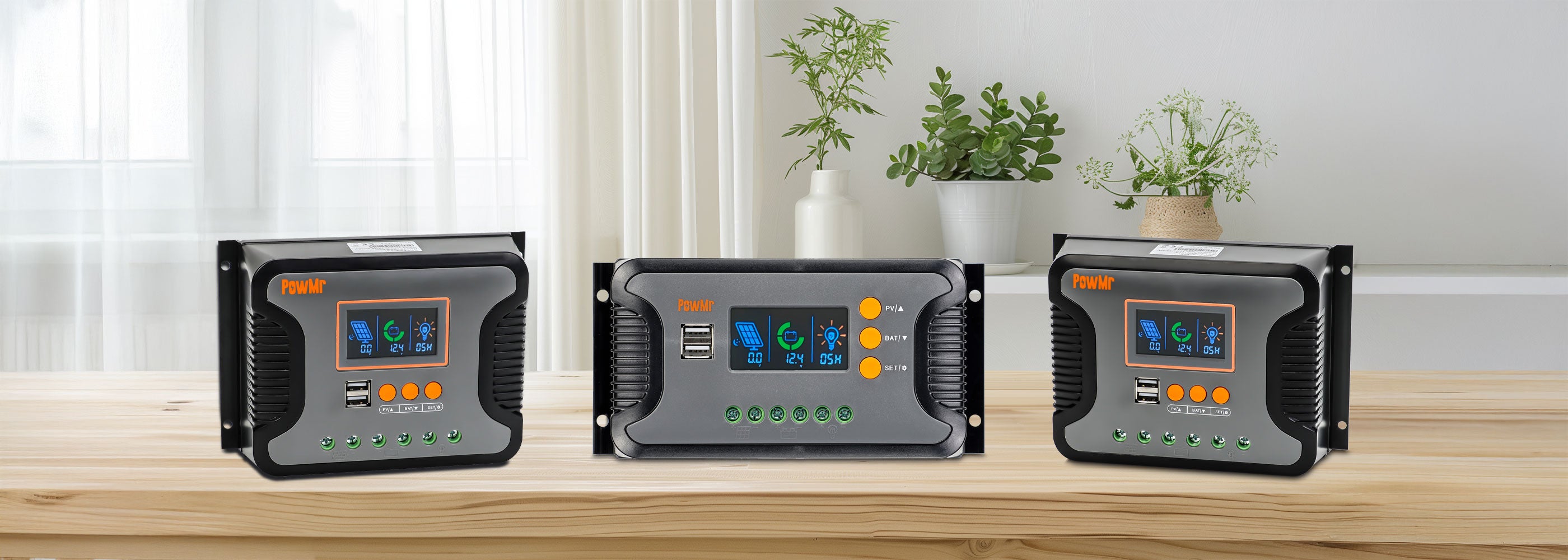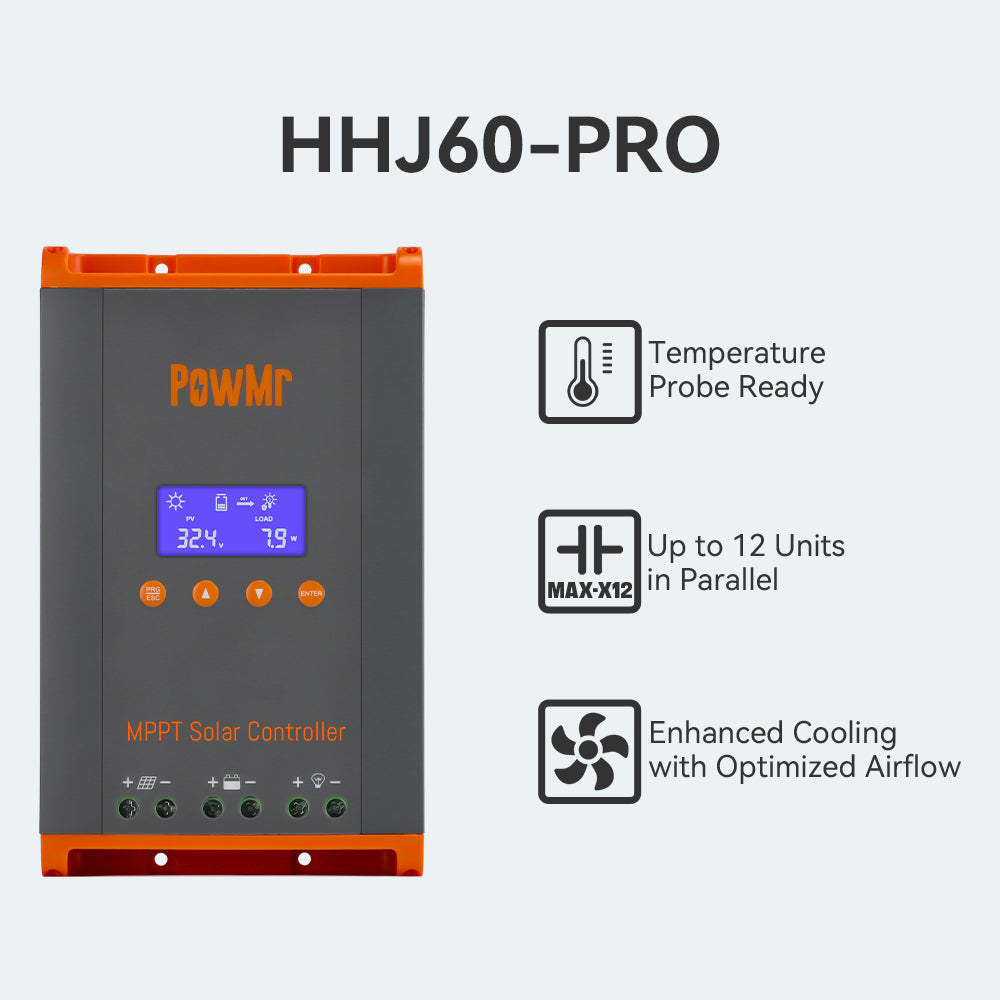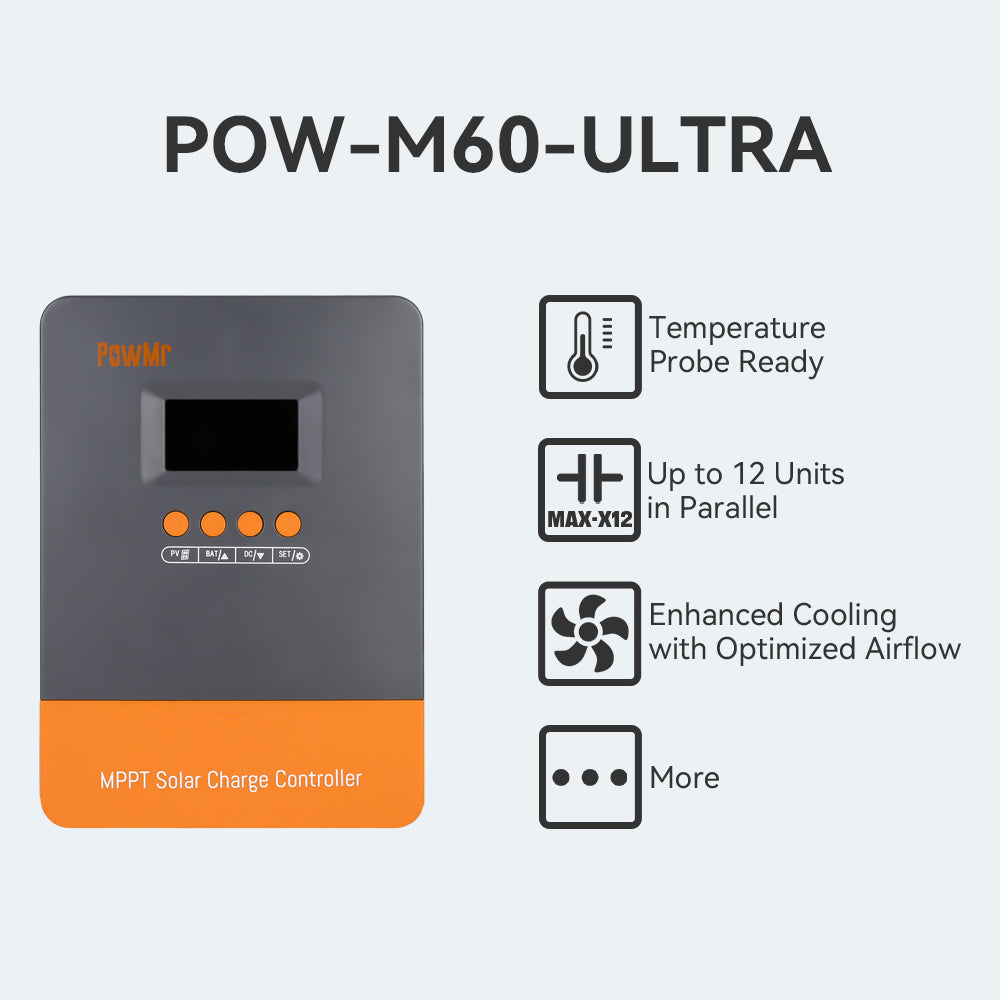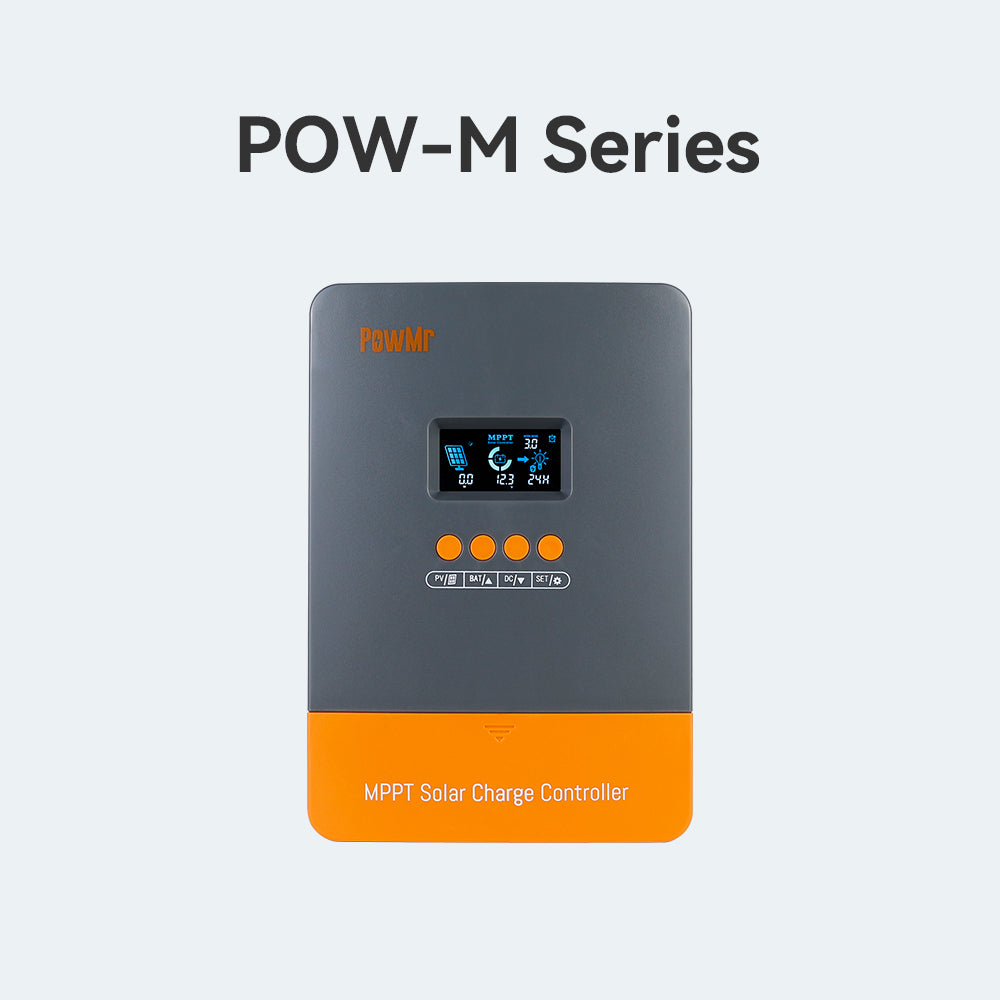Advantages of MPPT Charge Controllers
MPPT charge controllers convert all the solar electricity voltage possible into useable electricity. They operate at maximum power voltage (Pmp) which is higher than battery voltage. MPPT’s maximum conversion efficiency is ideal in intermittent sun and cloudy conditions, and in cold weather where they boost module output more than in warm weather.
Increased Energy Harvest
MPPT controllers operate array voltages above battery voltage and increase the energy harvest from solar arrays by 5 to 30% compared to PWM controllers, depending on climate conditions.
Array operating voltage and amperage is adjusted throughout the day by the MPPT controller so that the array’s power output (amperage X voltage) is maximized.
Less Module Restrictions
Since MPPT controllers operate arrays at voltages greater than battery voltage, they can be used with a wider variety of solar modules and array configurations. Moreover, they can support systems with smaller wire sizes.
Support for oversized Arrays
Unlike PWM controllers, MPPT controllers can support oversized arrays that would otherwise exceed the maximum operating power limits of the charge controller. The controller does this by limiting the array current intake during periods of the day when high solar energy is being supplied (usually during the middle of the day).
While energy from the array is capped or shaved off during the middle of the day, the oversized array is able to provide more power during teh early and late part of the day compared to smaller non-oversized array.
Advantages of PWM Charge Controllers
There are indeed instances where a PWM controller can be a better choice than MPPT and there are factors which will reduce or negate the advantages the MPPT may provide. The most obvious consideration is cost. MPPT controllers tend to cost more than their PWM counterparts.
Relatively Constant Collection Efficiency
Low power (specifically low current) charging applications may have equal or better energy harvest with a PWM controller. PWM controllers will operate at a relatively constant harvesting efficiency regardless of the size of the system (all things being equal, efficiency will be the same whether using a 30W array or a 300W array). MPPT regulators commonly have noticeably reduced harvesting efficiencies (relative to their peak efficiency) when used in low power applications.
More Economical at Higher Temperatures
The greatest benefit of an MPPT regulator will be observed in colder climates (Vmp is higher). Conversely, in hotter climates Vmp is reduced. A decrease in Vmp will reduce MPPT harvest relative to PWM. Average ambient temperature at the installation site may be high enough to negate any charging advantages the MPPT has over the PWM. It would not be economical to use MPPT in such a situation. Average temperature at the site should be a factor considered when making a regulator choice.
Lower Cost
Systems in which array power output is significantly larger than the power draw of the system loads would indicate that the batteries will spend most of their time at full or near full charge. Such a system may not benefit from the increased harvesting capability of an MPPT regulator. When the system batteries are full, excess solar energy goes unused. The harvesting advantage of MPPT may be unnecessary in this situation especially if autonomy is not a factor.







